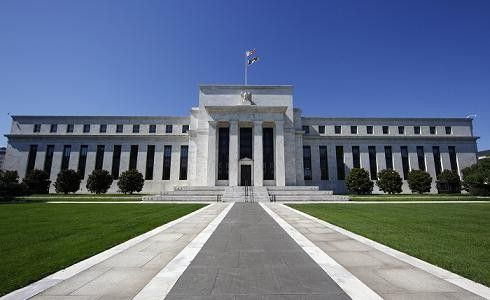Federal Reserve Lent Private Banks $1.2 Trillion During Financial Crisis’ Acute Stage
ANALYSIS

The U.S. Federal Reserve lent private banks about $1.2 trillion in order to maintain credit market liquidity, bank function, and prevent the U.S. economy from plunging in to a depression.
The largest borrower was Morgan Stanley (MS), which received as much as $107.3 billion in loans, Bloomberg News reported Sunday, while Citigroup (C) received $99.5 billion, and the Bank of America (BAC) received $91.4 billion. Bloomberg News obtained the information through Freedom of Information Act requests.
The loan totals far surpass the $160 billion in public bailouts the top 10 banks received from the U.S. Treasury Department. Up until now, the Federal Reserve action was not made public.
The Federal Reserve said it had no credit losses on any of the emergency programs, and a February Fed report said the central bank had netted $13 billion in interest and fee income from the programs from August 2007 through December 2009, Bloomberg News reported.
What's more, half of the Federal Reserve's top 30 borrowers, as ranked by peak balances, were European firms. They included: Edinburgh-based Royal Bank of Scotland Plc, which received $84.5 billion in loans; UBS AG, $77.2 billion; and Germany's Hypo Real Estate Holding AG, $28.7 billion.
Monetary/Public Policy Analysis: Extraordinary times require extraordinary measures, and that has been the case regarding the U.S. Federal Reserve's monetary policy during the financial crisis -- the world's biggest financial and economic crisis since the Great Depression.
Critics will grandstand and attempt to broad-side Fed Chairman Ben Bernanke, and Bush Administration U.S. Treasury Secretary Henry Paulson, and current U.S. Treasury Secretary Timothy Geithner for the non-conventional policy, but let there be no doubt: these loans and massive interventions were required to maintain the U.S. financial system, and probably the global financial system.
Credit markets are still attempting to heal from the devastating impact of the Lehman Bros. bankruptcy. Had Bernanke, Paulson, Geithner et al not acted -- and specifically had they not acted during the historic Saturday Night Walk to Capitol Hill to tell Congressional Leadership they needed about $700 billion, and fast, the U.S. and probably much of the world would have reverted to the barter system -- the situation was that serious.
That intervention, the subsequent loans, and QE/QE2, in conjunction with actions by the world's other, major central banks, helped maintain the modern financial system. They are the reason your ATM works today.
Further, after credit markets have been restored to full health and the U.S. economy has progressed to a self-sustaining expansion, they'll be plenty of time to review all decisions.
Even so, the view from here argues that history will regard these interventions and decisions -- most done amid intense pressure and with no prior model -- as the correct decisions that helped save the modern financial system.
New York Times Business Columnist Floyd Norris said it best: Resolving the financial crisis is one of those events in which justice and success do not occur together.
The United States choice success. It was the correct choice.
© Copyright IBTimes 2025. All rights reserved.





















